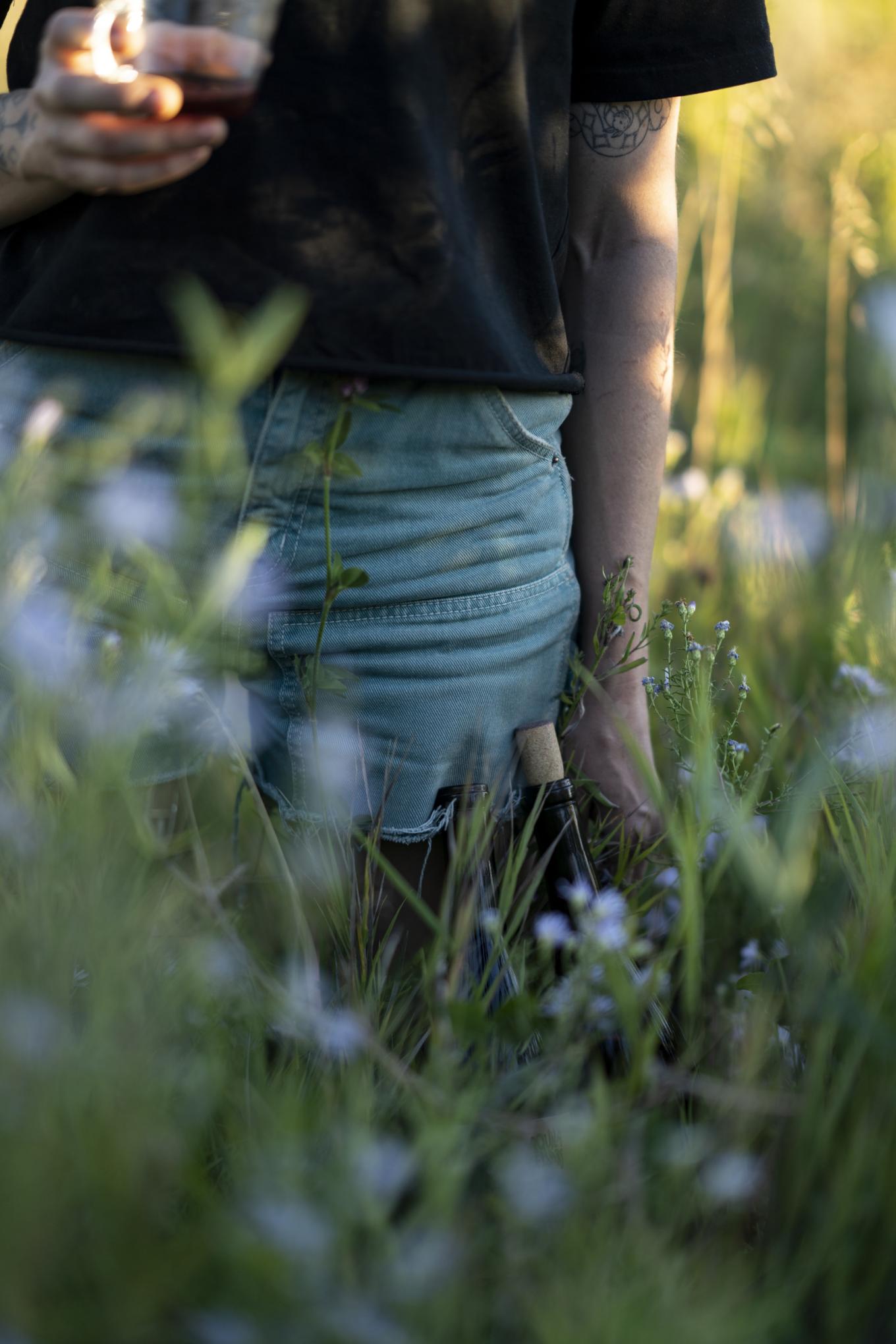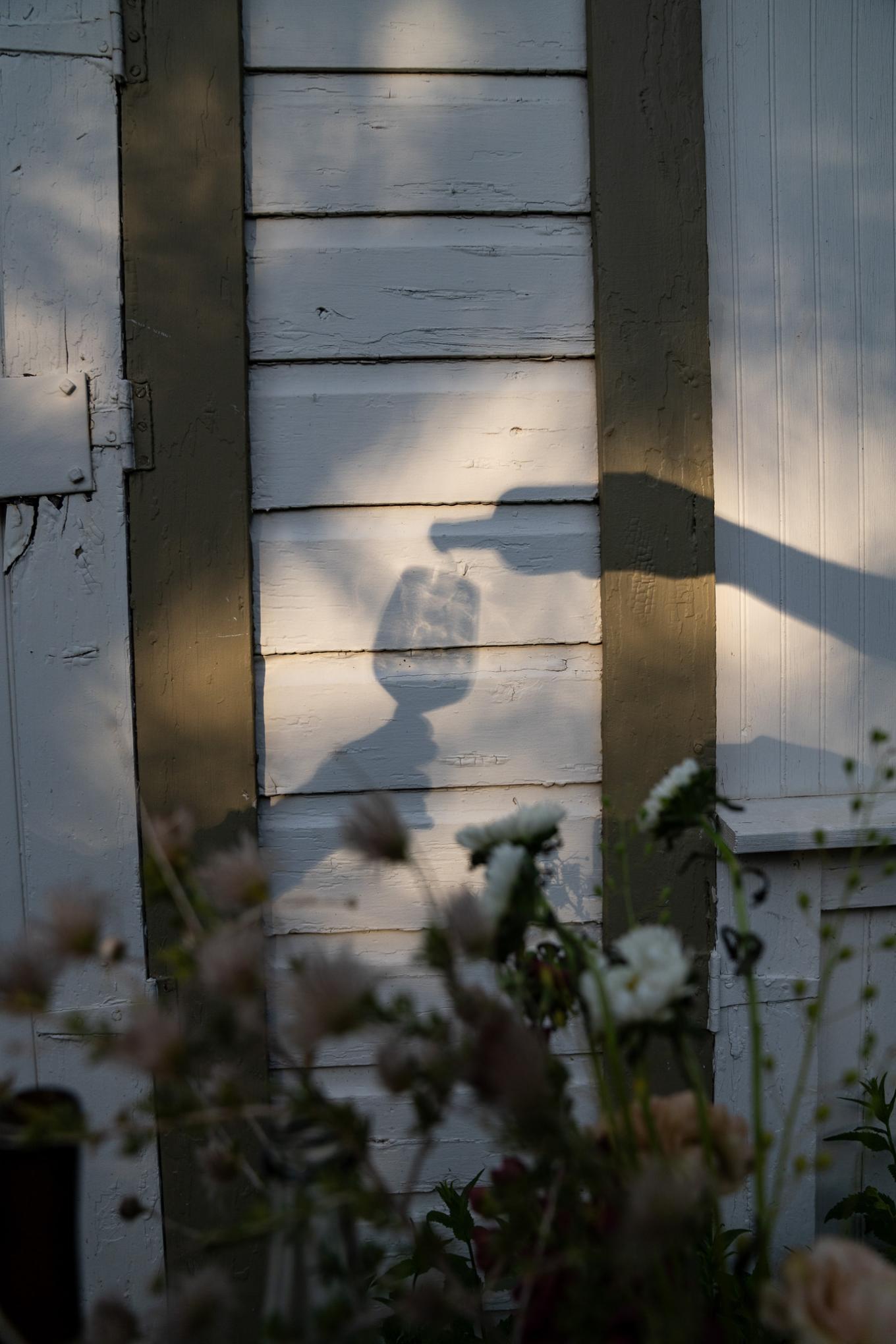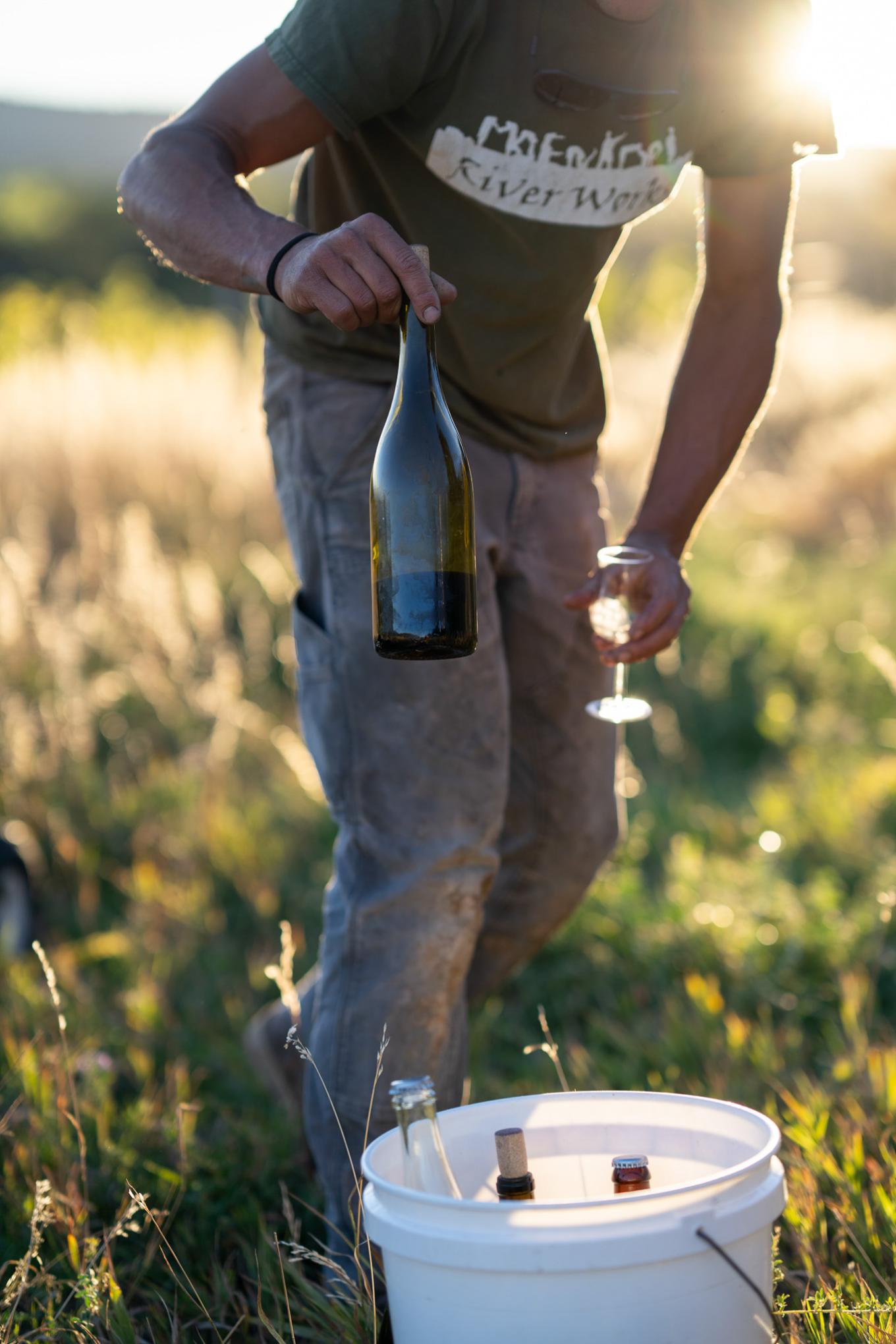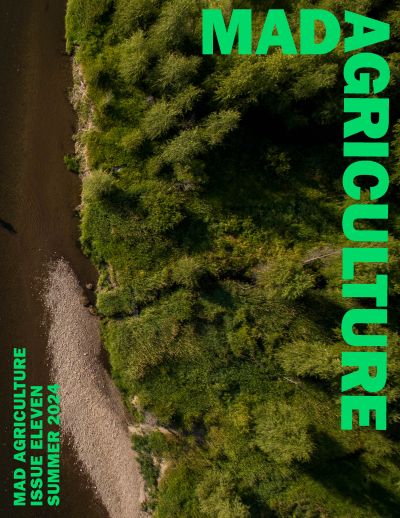
The Mad Agriculture Journal
Great Wines are Like Fables
Published on
July 28, 2024
Words by
Brandt Thibodeaux
Photos by
Brendan Davis
“The Journey” - Energy
“You cannot measure the energy in a glass of wine, but you can feel it. That means you move from only measuring something to feeling it.” -Gerard Bertrand
One of my earliest memories is walking levees with my father through flowing green blades of rice that stretched on for miles, our tall rubber boots on and a shovel in hand, the warm sun coming up over the flat prairie landscape throwing strokes of purples and reds. It’s like a recurring dream. I feel the barometric pressure drop as the spring fronts push cooler dry air through the usually hot, saturated atmosphere. I can smell the mud, dark muck, a mix of life, decay and freshwater, as the birds, of all kinds, shapes and sizes cause a ruckus in my ears.
This singular moment, a culmination of moments that my mind recreates, listening to that movement, the orchestrated pulse of life, I think—is what brought me here to this place. I followed that pulse out of Bayou Plaquemine to the Rocky Mountains to the Desert Southwest, to the Northwest and to Mexico. I pursued work as a raft guide and as a field ornithologist, jobs that would get me closer to understanding what I was already feeling.
I believe in this place—I am not sure what that means but I feel it—like the rhythm of seasons. This Western expanse is a land dreams are made of, a place that inspires and destroys you all at once. You can hear the voices of the ones telling us of its visceral potential, like you’re riding side by side with John Grady Cole, stomping through canyon puddles with Edward Abbey, or huddled in a sheep wagon swapping hardships with Gretel Ehrlich. The ghosts are loud here where open blue skies and endless expanses leave nothing in the path between you and the celestial energy bombarding. The sun is a death ray and the nights are cold but beautiful and alive. Now, I find myself here on the edge of the Rocky Mountains, at the very top of the endless desert, the precipice of the Colorado Plateau, back on the farm. Except this time it’s grape vines I’m walking through, their leaves rustling as they prepare to fall off and ready for the cold winter. Distant Sandhill Cranes calling, together creating a canticle for the snowy peaks in the backdrop.

“Desert Power” - An Ecological Approach
“There’s an internally recognized beauty of motion and balance on any man-healthy planet – You see in this beauty a dynamic stabilizing effect essential to all life. Its aim is simple: to maintain and produce coordinated patterns of greater and greater diversity. Life improves the closed system’s capacity to sustain life. Life — all life — is in service of life.” - Dune, The Ecology of Dune, Dr. Kynes
Outside of Western Colorado there are not many places in the world that see annual summer temperatures over 100F and winters down or below 0F with a 50F degree diurnal swing in spring and fall. It is unique, and comparable only to parts of the Armenian Highlands. The western European grape varieties of vitis vinifera that we grow here barely tolerate the winter temperatures below 5F and winter damage is a threat, with extreme freezes that knock vines back to the ground occurring every 20-30 years. Our growing season ranges from mid-May to late-October, with high UV and long days that allow for ripening, and cool nights and high elevations that keep the acid high and metabolism slow.
The meso climates here are diverse and heavily influenced by the elevation and soils. Elevations range from 5600-6800’ and vineyards can be found both in the river corridor and atop the many bajadas that snake off of the upper mountains of the Grand Mesa and West Elks Range. Our soils are a story of a dynamic and violent geological history, dominated by the presence of mancos-shale deposited by the Western Interior Seaway and shaped by mass flooding that occurred 1.8 million-10,000 years ago, creating alluvial fans of basalt boulders and exposed ancient river beds both inlaid with shale and calcareous clays.
The area has a long history of grape growing dating back to the early 1900s when Clement Fougnier was selling his Gewurztraminer to Aspen socialites but it is very much in its infancy as a commercial wine growing region, roughly 30 years old. We do not pretend to know anything. This is a lesson in humility and managing doubt, and a puzzle of logistical challenges that gets the grapes from vine to glass. We are learning and evolving but we feel that we are doing the work for future generations rather than ourselves.
There are three main inspirations for our farming practices: the biodynamic philosophy of Rudolf Stiener, the lifestyle, hands-off approach of Fukuoka, and the fantastical ideas of human potential and desert cultivation expressed in Frank Herbert’s Dune. From these inspirations we place ourselves on a path of a low-input, ecological approach to land management that focuses on positive compounding effects and the relationships between form and function. We eliminate inputs rather than find organic replacements for a conventional method. We try to harbor biodiversity by creating an energetic and physical base for a diverse system to thrive. We do this mainly through the use of botanical and biological teas that are produced from local or on-site materials, mainly equisetum, holding the principle of cycles close. We think more about managing soil, micro-climate, and energetics rather than managing the plants themselves. At the same time, we embrace many elements of science and technology as long as they align with the principles of ecology and positive compounding actions.

Wine – The Juice
“There is the necessity to embrace the element of surprise. There can be no fear of losing what was once planned and there must be an urge to grow along with the discovery of the unknown.” - Paul Soldner
Great wines are like fables. In the end we are left in the room alone with questions rather than answers, vacuums of thoughts, rather than foundations. You sit there trying to rehearse your experience, swirling an empty glass, smelling it all the same as if the wine lives forever, effervescing into your sensory memory, fortified in eternity, free of the realities of oxygen.
Our intention is to deliver to you a wine that takes you on a journey through a day in the desert: the high elevation, intense UV, the small berry size, the medicinal flavonoids—a wine with the unequivocal structure of the cluster—dynamic and evolving as oxygen seeps in, cool and fruity like the early dawn, harsh blinding heat liked chalky fine tannin. Cooling, softening into the magical hours of evening, coalescing into a singular expansive vision and then fading into darkness.
At the fleeting moment of harvest we attempt to capture this, a capsule of time and place which encompasses the energy of living and nonliving things—the energy rising from Earth’s core and the energy, beaming down from celestial space. It holds the essence of the growing season—the amount of sunlight and its intensity, every footstep in the vineyard, the laughter of the workers. It takes approximately 500 days for a bud to form, winter, flower, fruit and mature. And when the grapes are harvested, on their surface, is a thriving, fantastic biome of simple celled mirco-organisms whose life and death will manifest the essence of the time capsule, the essence of the self contained waters and sugars. When a hands-off approach is taken to the cellar, the juice remains energetic, transcending time and space. In the end it is only juice and wine but if you understand it, you know it to be magic. You may choose to only drink it but you may also choose to feel it. We put this juice—the story, the people, and the land in a glass and smell them all together. The bird songs and the laughter, the conversations, and the bees buzzing are there, coalescing into something we like to call terroir. We chase it and we wait watching the glass, endlessly swirling.
The Wine Industry
“I thought of the disjunction between a farmer tending their vines, picking and pressing the grapes, bottling the juice—and what happens when a bottle, labeled, goes out into the world of consumers, who may turn it into social capital.”
- Rachel Signer
After all of the philosophy, all of the romantic ideas, and days and nights of stress and back breaking work, there is sales and at this point, reality takes precedence over dreams. Not only does the product become social capital but you, yourself, your story, become social capital. Some days you feel like an entrepreneur in a solid industry, some days you feel like a puppet or pawn in someone else’s game and others you feel like a struggling artist in the shadows. You put a smile on your face and hump the bag down the cobbled streets of the “Emerald City”, trying to get past the gatekeepers and into the palace of acceptance, 1000 years of history and 50 years of biases standing in the way.

Celebrate Yourself – Celebrate Ourselves
“We the youthful sinewy races, all the rest on us depend”
“We take up the task eternal, and the burden and the lesson.”
-Leaves of Grass, Walt Witman
When my original investment partners dropped out, early on in the project in 2019, I was left with the decision to call it quits or keep going. It wasn’t an easy decision but I knew that if I was going to keep it going, I not only needed financing but a team—not a team that I lead, a team of leaders—individuals equally interested in collaboration who had strategic strengths to facilitate our success.
Collaboration is perhaps one of the hardest but most rewarding parts of doing business. Relationships are often easily formed but difficult to maintain. Circumstances change, life changes, the market shifts, people change, or aren’t who you thought they were. But, when individuals come together that poses the right combination of strengths, magic can happen and the boulder that is being pushed up the hill moves a little easier, with a little less friction and the unattainable seems in reach.
Aquila Cellars is composed of a core team of three, Kade Gianinetti, who is our investor and CFO and runs our restaurant and tasting room, “The Painted Pig”. Courtney Gayer who is the graphic designer and media lead, helps with winemaking and is leading our newest venture, “The Green Room” wine bar. And I am back on the farm, “Crane Mesa”, managing the land and leading wine production. Amongst us is a team of people we work alongside—orchardist, cooks, chefs, hospitality professionals, event planners, bartenders—everyone plays an integral part in making it all work. This is all backed by a community of farmers, distributors, wine professionals, artists and craftspeople who we support and who in turn support us.
Aquila Cellars at its core is not just a winery, it’s an idea that is still being manifested, grounded in place, in the idea of terroir. This is the grounding premise that must be the veins of all that stems from Aquila. We are going full Walt Whitman here: embracing and supporting America, not as a country, but what America is as a concept, as a people and how we can influence what America is becoming. We are all on the same team if we choose to think this way and we take up this task with fervent hearts. When an environment is thriving, everything is thriving; our bellies are full, our hearts are full and our minds are strong and clear, fear and longing are transformed into love and peace and life and death fall into balance.
Agriculture = Culture
“The soil is the great connector of lives, the source and destination of all. It is the healer and restorer and resurrector, by which disease passes into health, age into youth, death into life. Without proper care for it we can have no community, because without proper care for it we can have no life.”
― Wendell Berry, The Unsettling of America: Culture and Agriculture
The last thing we must know is this project was never about wine. At least, it was never only about wine. This was always about farming—but more about soil than plants and more about listening than doing. This was always meant to be a lesson, not a lecture. This is definitely about energy and awareness of intuition. It was always about farming but also about people and relationships to land and to each other. It must be about imperfection. And perhaps, if we have to wrap it in something, we can wrap it in the idea of terroir—pure expression of time and place.
As we push into the next phases of our project, the logistics become more muddled as the vision becomes clearer. Community, culture, our relationship to farming and how it shapes our relationship to each other; these are the themes. On the farm, Crane Mesa, we work to provide you with the pure essence of wine and now food, as we begin a partnership with Seed Peace. At the Painted Pig, we intend to offer a “third place” for the community, shelter for travelers on a journey, an experience that is uniquely Coloradan. In the Green Room, we offer a quiet place to contemplate and conspire, to dream big about America, to celebrate ourselves, to shake out the nerves before the big show. As Gill Scott-Heron says, “the revolution will not be televised”. If you know, then you know that the next revolution is an agricultural revolution, a new phase in human history comparable only to the transition from hunter-gatherer to agrarian. Let us come together and feed our nostalgia for the lost oneness. If you can feel it, then join us.
